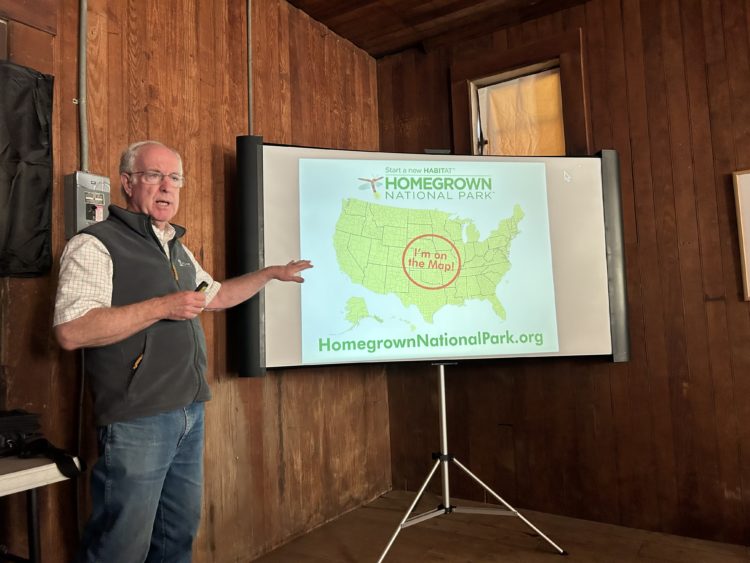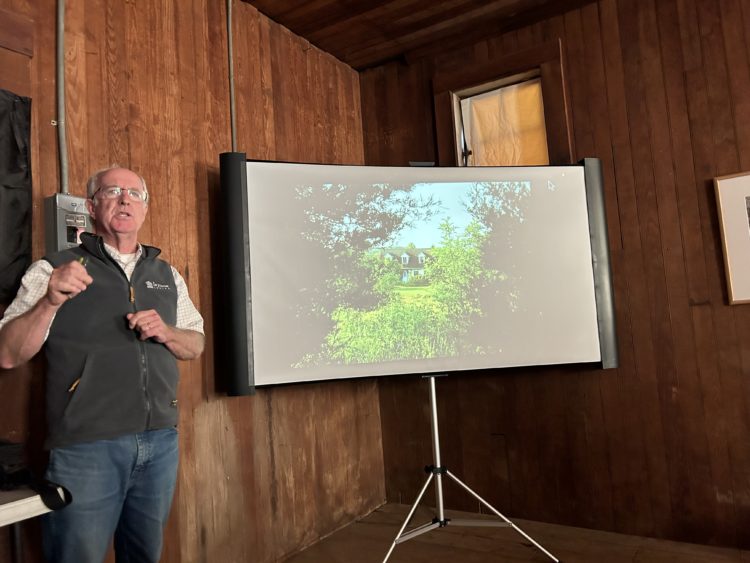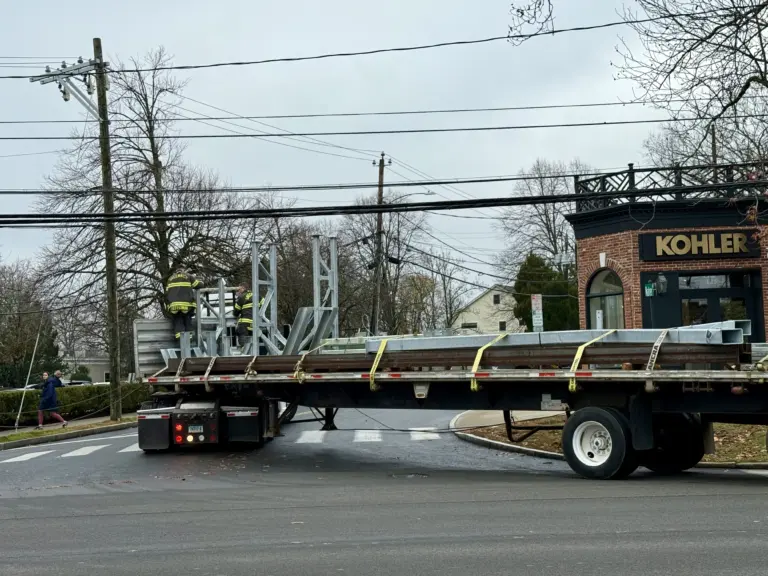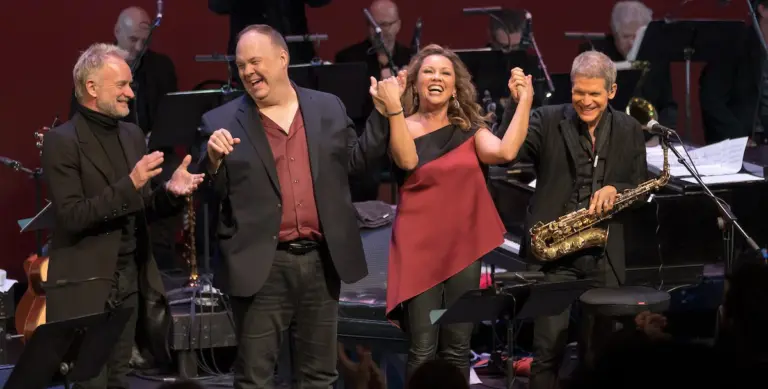
By Anne W. Semmes
On Tuesday last the Greenwich Land Trust hosted the much-followed advocate of bringing back nature and native plants to your backyard, Douglas “Doug” Tallamy. He began his talk before some 40 land-loving attendees with his inspiration, the late naturalist and fellow entomologist E.O. Wilson. “And one of the things that was consistent throughout his very long career,” said Tallamy, “was his love of life on earth and his consistent efforts to save it, not just because he loved it, but because he knew it was essential to our own survival.” And in Wilson’s book, “Half Earth, Our Planet’s Fight for Life” said Tallamy, “his message was we’re going to have to save functioning ecosystems on at least half of the planet.”
But Tallamy has devised a more personal conservation approach to help realize Wilson’s dream, first exemplified by how he and his wife Cindy have transformed their 10-acre property in Oxford, PA (he teaches at the University of Delaware) over the years from an agricultural wasteland to a verdant ecosystem filled with native plants and trees attracting that vital insect life that Wilson heralded as “the little things that run the world.”
The Tallamys planted “lots of oaks – especially that Bedford Oak from Bedford, NY) – that have attracted “hundreds more species.” And “You don’t have to wait decades for your oaks to contribute to your local ecosystem.” Such as those moths! “I’m up to 1,245 species that we found because we’ve put the plants back…We are supporting 48 percent of all the moths that occur in the entire state. And because so many of these are types of bird food, we’ve recorded 62 species of birds that have bred on our 10 acres.”
He then gives those dreadful statistics as further inspiration. “The World Wildlife Fund says that we have lost two thirds of wildlife since 1970. But I’m thinking, not at our house. I’m convinced we have increased biodiversity by more than two thirds.”
He then introduces the way we can all follow his example with his initiative – Homegrown National Park, and how it came to him. He cites a statistic that there are 44 million acres of lawns in the U.S. and “that is greater than the entire area of New England dedicated to an ecological dead space…But what if we cut the area of lawn in half? And what if we take over 20 million-plus acres we can restore right at home. That will be enough to create a new national park that I’m calling Homegrown National Park. “
And yes, those restored acres would be bigger he said, “than the Adirondacks, Yellowstone, Yosemite, Grand Tetons, Canyon Lands, Mount Rainier, North Cascades, Badlands National Park, Olympic National Park, Sequoia National Park, plus the Grand Canyon, plus Denali, and the Great Smoky Mountains – all those parks, still less than 20 million acres.”
Surely a concept that would impress E.O. Wilson. “So, Homegrown National Park will be the biggest park in the country. What do we get when we create a park at home? We get the chance to interact personally one-on-one with Mother Nature at our own time, our own pace.”
“If you want to join Homegrown National Park,” he said, “You can do it. Go to HomegrownNationalPark.org and register the amount of area of your property and where you’re located and you’re going to be a good steward of,” and “It doesn’t matter how big or small, you put that area on the map, on the database.”
He showed in his slides successful smaller properties transformations. “So, let’s go to the Turkers house in Kirkwood, Missouri – they have 0.6 acres, 18 times less land than Cindy and I have. When they moved into their property in a development, it was loaded with invasive Asian honeysuckle. So, they got rid of that, then planted 70 species of native plants and put in a bubbler water feature, and they sat back and started to count the birds using their 0.6 acres in suburbia, and they’re up to 149 bird species so far, including 35 warbler species.”
And what of urban yards? “Let’s go to Pam Carlson’s house in Chicago,” he told, adjacent to O’Hare Airport. “She has one-tenth of an acre that’s three times smaller than the average lot size in North America… She got rid of her non-native plants, put in 60 species of native plants…sat back she says with a glass of wine and started to count the birds…she’s up to 124 species of birds that have used it, including a woodcock. If you haven’t seen a woodcock lately, go to Pam’s house in Chicago.”
“There are real ecological profits associated with Homegrown National Park,” he continued. “One is a significant increase in biodiversity and just look at what’s happened at our house in southeast Pennsylvania. It really does work because nature really is resilient. Seventy-eight percent of this country is privately owned! If everybody got rid of their invasive plants just on their property, we’d be 78 percent done – with a significant drawdown of CO2.”
“We’re trying to change the culture,” said Tallamy. “We want people to recognize that nature’s essential. It’s not just there for our entertainment. It’s essential to everybody, which means everybody owns responsibility of taking care of it. We want to convert hope into action. Hope is good, but action’s even better. And finally, we want to merge all of the national conservation efforts that already exist. We’ve got this 30 by 30 initiative, step one towards Wilson’s Half Earth policy of saving 50 percent of the Earth by 2050. We’re going to save 30 percent by 2030.”
“That does not mean you have to save biodiversity for a living,” he concluded, “but you can save it where you live. Don’t think about the entire planet’s problems. You get depressed. Just think about the piece of Connecticut you can influence. If you own property, it’s obvious that’s where you start. If you don’t own property, help a land conservancy, help a park or preserve. They’re all underfunded, they’re all understaffed. They will love you as a volunteer.”





